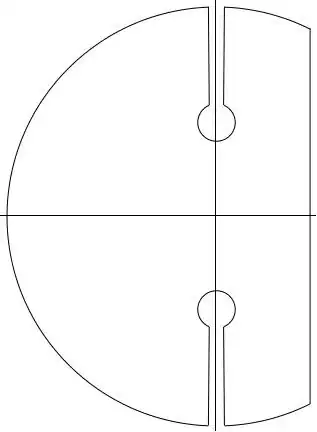$$\int_{-\infty}^{\infty} dy \frac{J_1 \left ( \pi\sqrt{x^2+y^2} \right )}{\sqrt{x^2+y^2}} = \frac{2 \sin{\pi x}}{\pi x} $$
How do I show this?
$$\int_{-\infty}^{\infty} dy \frac{J_1 \left ( \pi\sqrt{x^2+y^2} \right )}{\sqrt{x^2+y^2}} = \frac{2 \sin{\pi x}}{\pi x} $$
How do I show this?
This is going to be a little involved. Begin with the representation
$$\int_{-1}^1 du \frac{u}{\sqrt{1-u^2}} \sin{r u} = \pi J_1(r) $$
which may be obtained by differentiating the well-known relation
$$\int_{-1}^1 du \frac{\cos{r u}}{\sqrt{1-u^2}} = \pi J_0(r) $$
Then
$$\begin{align}\int_{-\infty}^{\infty} dy \frac{J_1 \left ( \sqrt{x^2+y^2} \right )}{\sqrt{x^2+y^2}} &= \frac1{\pi} \int_{-1}^1 du \frac{u}{\sqrt{1-u^2}} \int_{-\infty}^{\infty} dy \frac{\sin \left ( u\sqrt{x^2+y^2} \right )}{\sqrt{x^2+y^2}} \\ &= \frac{2}{\pi}\int_{-1}^1 du \frac{u}{\sqrt{1-u^2}} \int_1^{\infty} dv \frac{\sin{(u x v)}}{\sqrt{v^2-1}} \end{align}$$
One may show through a Laplace transform that the inner integral has a value of $\frac{\pi}{2} J_0(x u) \operatorname{sgn}{(x u)}$. The integral we seek is then
$$\begin{align}\int_{-\infty}^{\infty} dy \frac{J_1 \left ( \sqrt{x^2+y^2} \right )}{\sqrt{x^2+y^2}} &= 2 \int_0^1 du \frac{u}{\sqrt{1-u^2}} J_0(x u) \\ &= 2 \sum_{m=0}^{\infty} \frac{(-1)^m}{m!^2 2^{2 m}} x^{2 m} \int_0^1 du \frac{u^{2 m+1}}{\sqrt{1-u^2}}\\ &= 2 \sum_{m=0}^{\infty} \frac{(-1)^m}{m!^2 2^{2 m}} x^{2 m} \frac{2^{2 m}}{(2 m+1) \binom{2 m}{m}}\\ &= 2 \sum_{m=0}^{\infty} (-1)^m \frac{x^{2 m}}{(2 m+1)!} \\ &= \frac{2 \sin{x}}{x}\end{align} $$
ADDENDUM
It is straightforward to show that the Laplace transform of $J_0(t)$ is $(1+s^2)^{-1/2}$. (One may use the series representation of $J_0$.)
We may derive the integral above by considering the computation of the inverse Laplace transform of $(1+s^2)^{-1/2}$. Consider
$$\oint_C dz \frac{e^{z t}}{\sqrt{1+z^2}} $$
where $C$ is defined by the following contour:

where the Bromwich contour is deformed to avoid the branch points at $\pm i$. In the limit of the radius of the outer arcs goes to infinity and the radius of the smaller circles about the branch points goes to zero, we have that
$$\int_{c-i \infty}^{c+i \infty} ds \frac{e^{s t}}{\sqrt{1+s^2}} + i \int_{\infty}^1 dy \frac{e^{i y t}}{\sqrt[+]{1-y^2}} + i \int_1^{\infty} dy \frac{e^{i y t}}{\sqrt[-]{1-y^2}} \\ - i \int_{\infty}^1 dy \frac{e^{-i y t}}{\sqrt[+]{1-y^2}} - i \int_1^{\infty} dy \frac{e^{-i y t}}{\sqrt[-]{1-y^2}} $$
where $\sqrt[+]{1-y^2} = i \sqrt{y^2-1}$ and $\sqrt[-]{1-y^2} = -i \sqrt{y^2-1}$ represent the different branches of the square root. We thus have, by Cauchy's theorem, that the contour integral is zero so that the ILT is
$$\frac1{i 2 \pi} \int_{c-i \infty}^{c+i \infty} ds \frac{e^{s t}}{\sqrt{1+s^2}} = J_0(t) = \frac{2}{\pi} \int_1^{\infty} dy \frac{\sin{y t}}{\sqrt{y^2-1}} $$
for $t \gt 0$, as was to be shown.